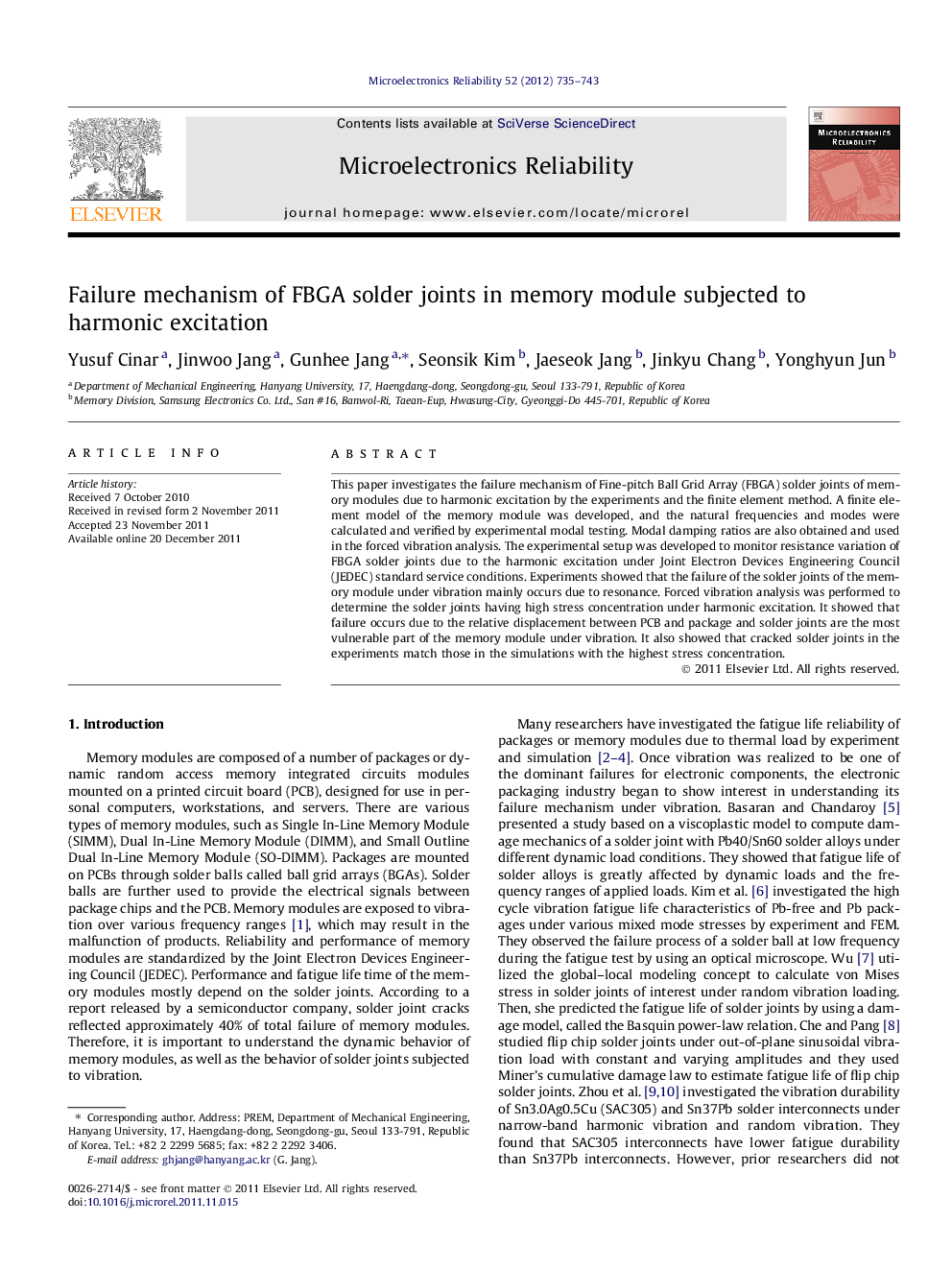| Article ID | Journal | Published Year | Pages | File Type |
|---|---|---|---|---|
| 547190 | Microelectronics Reliability | 2012 | 9 Pages |
This paper investigates the failure mechanism of Fine-pitch Ball Grid Array (FBGA) solder joints of memory modules due to harmonic excitation by the experiments and the finite element method. A finite element model of the memory module was developed, and the natural frequencies and modes were calculated and verified by experimental modal testing. Modal damping ratios are also obtained and used in the forced vibration analysis. The experimental setup was developed to monitor resistance variation of FBGA solder joints due to the harmonic excitation under Joint Electron Devices Engineering Council (JEDEC) standard service conditions. Experiments showed that the failure of the solder joints of the memory module under vibration mainly occurs due to resonance. Forced vibration analysis was performed to determine the solder joints having high stress concentration under harmonic excitation. It showed that failure occurs due to the relative displacement between PCB and package and solder joints are the most vulnerable part of the memory module under vibration. It also showed that cracked solder joints in the experiments match those in the simulations with the highest stress concentration.
